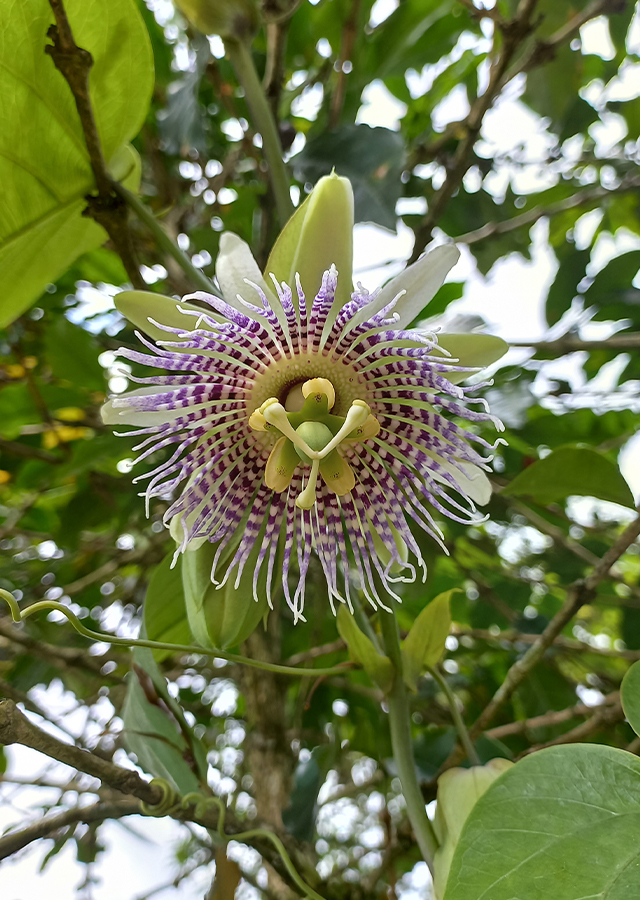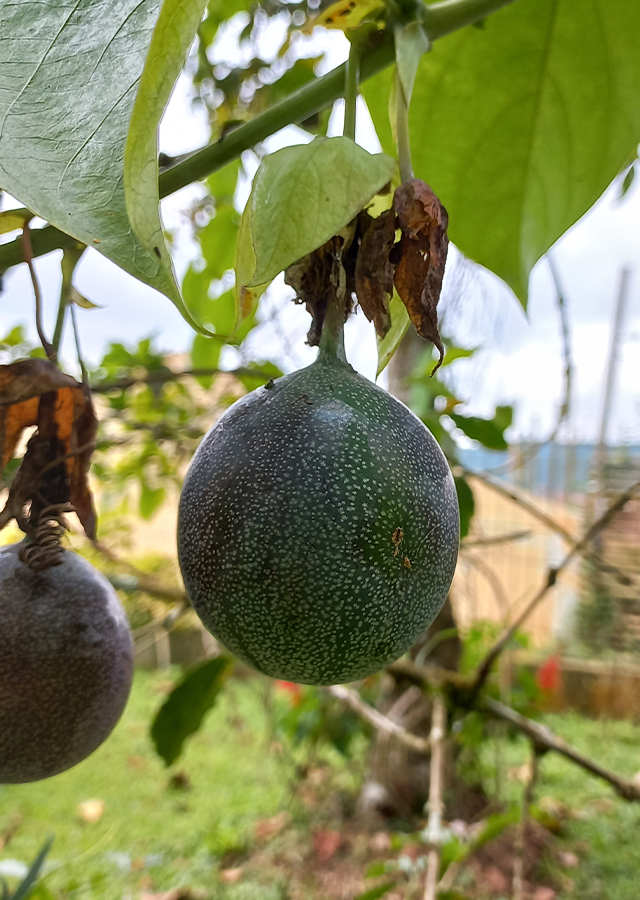Traditional Herbs from Passiflora ligularis
fever
- Take enough fresh Bandung passion fruit leaves\u00a0then wash them until clean.
- Boil them in water until boiling.
- Leave them warm/cold.
- Strain then drink 3 times a day to remove sweat so that the fever goes down.
obat_tenang
- Prepare enough fresh Bandung passion fruit leaves and roots\u00a0 then wash until clean.
- Boil in water until boiling.
- Leave it to cool. warm/cold.
- Strain and drink.
What is Passiflora ligularis Looks like??



Parts of Passiflora ligularis that could be used
- Leaves
- Fruits
- Roots
Passiflora ligularis Distribution
Bandung passion fruit is a vine that originates from the Andes in northwestern South America, Peru, Bolivia to Venezuela, and through Central America to Mexico. This species has been introduced and cultivated in India, east and southeast Asia, Australia and New Zealand and some Pacific islands. In its native area, this species is an important and widely cultivated fruit crop. Currently, it has been widely cultivated in many tropical and subtropical areas. This passion fruit is valued, because it produces edible fruit and can be grown as an ornamental plant. The fruit can be consumed fresh or processed into drinks or jelly. The beautiful flowers have been used in the perfume industry and the skin can be used as animal feed.Agroecology of Passiflora ligularis
Bandung passion fruit is found mainly in tropical and subtropical areas where the natural vegetation will be several types of mesic or moist forests, especially tropical highland forests, at altitudes between 800 - 3,000 m above sea level in tropical areas and down to sea level in subtropical areas. This plant is not suitable for cultivation in tropical lowlands. It grows best in areas where the annual daytime temperature is in the range of 22 - 26 °C, but can tolerate 16 - 31 °C and the average annual rainfall is in the range of 1,000 - 1,200 mm, but tolerates 650 - 2,500 mm . This plant prefers light soil ranging from sandy loam to loamy loam with moderate to high organic matter content, moist but well-drained, and a protected position in partial or sunny shade. This passion fruit does not like very acidic or very alkaline soil conditions, the desired degree of acidity (pH) is in the range of 6 - 7, but can tolerate 5.1 - 7.5.
Morphology of Passiflora ligularis
- Taproot.
- The stem is green at a young age, when old it turns brownish, has green tendrils, cylindrical, segmented, grooved, soft but woody at the base of the stem, glabrous.
- Single leaf , alternate, heart-shaped, pointed leaf tips, flat leaf edges, pinnate spines, smooth leaf surface and green.
- Perfect flowers (hermaphroditic), single, large, and Fragrant. The flower crown is in the form of very many straight threads with varying colors of purple and white. The flower petals are 5 in number, consisting of two layers with varying colors of green on the outer layer, white on the inner layer 3 leaves supporting the flower.
- The fruit is round, slightly oval or oval, yellow in color, the skin of the fruit is thick, the color of the funiculus (umbilical cord) of the fruit is yellowish white, the color of the fruit pulp is whitish, the juice is white and tastes sweet. Larger in size than Passiflora edulis.
- Seeds are elliptical, flat, black, covered in seed coat, there are many seeds in each fruit (250-350 seeds per fruit).
Cultivation of Passiflora ligularis
- Propagation is carried out generatively (seeds) or vegetatively (shoot cuttings, branch cuttings).
- Fresh seeds germinate in 10 - 20 days.
- Branch or stem cuttings are taken from superior mother trees that have been producing at least 1 year old and 1 cm in diameter. The stem or branch is cut to a length of 25 cm (there are 3 - 4 buds sown in an upright position 5 cm deep in a polybag and berries). cover. If the cuttings have sprouted and taken root, the seedlings from the cuttings will be intensively maintained until they are 3 - 4 months old.
Passiflora ligularis, more details :
Chemical Content of Passiflora ligularisPassiflorine, essential oils (heptacosane, squalene, pentadecanal, and ionol).
Benefits of Passiflora ligularis
Accelerates wound healing, is an effective sedative, treats intermittent fever, skin inflammation and erysipelas (acute infection of the skin and tissue under the skin), has an antispasmodic effect and causes drowsiness, is a diuretic and anthelmintic.
Simplisia of Passiflora ligularis
- Prepare enough Bandung passion fruit leaves, wash them thoroughly with running water.
- Dry them in the sun or in an oven at a temperature\u00a040\u00b0C until the water content\u00a010%.
- Clean them using a blender until they become powder.
- Store in a clean and airtight place.
Another Facts for Passiflora ligularis :
Synonym of Passiflora ligularis-
Habitus of Passiflora ligularis
Creepers. Vines, lianas, annuals, stem length ranges from 4 - 20 m
Habitat of Passiflora ligularis
- Forest
- Roadside
- Land
No comments:
Post a Comment